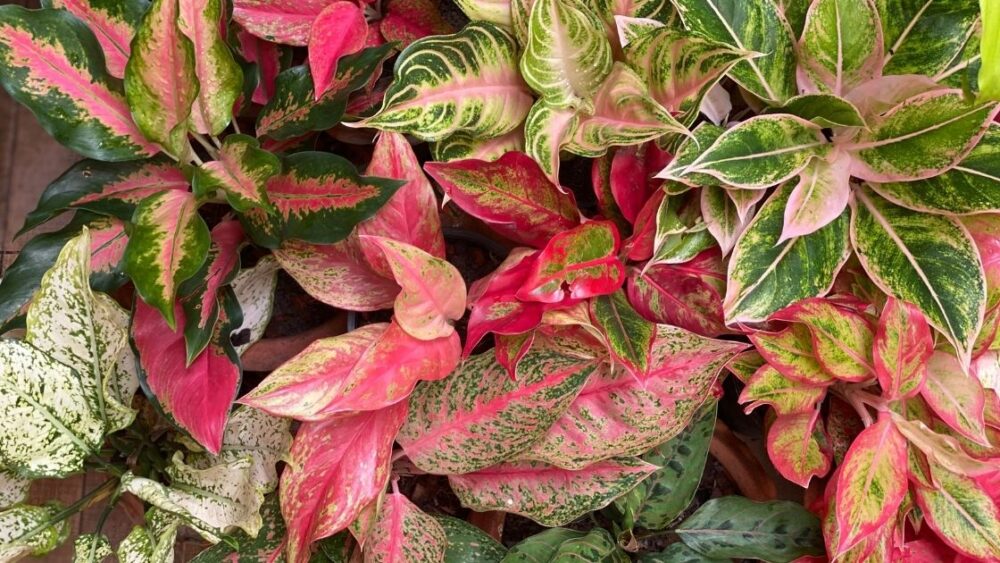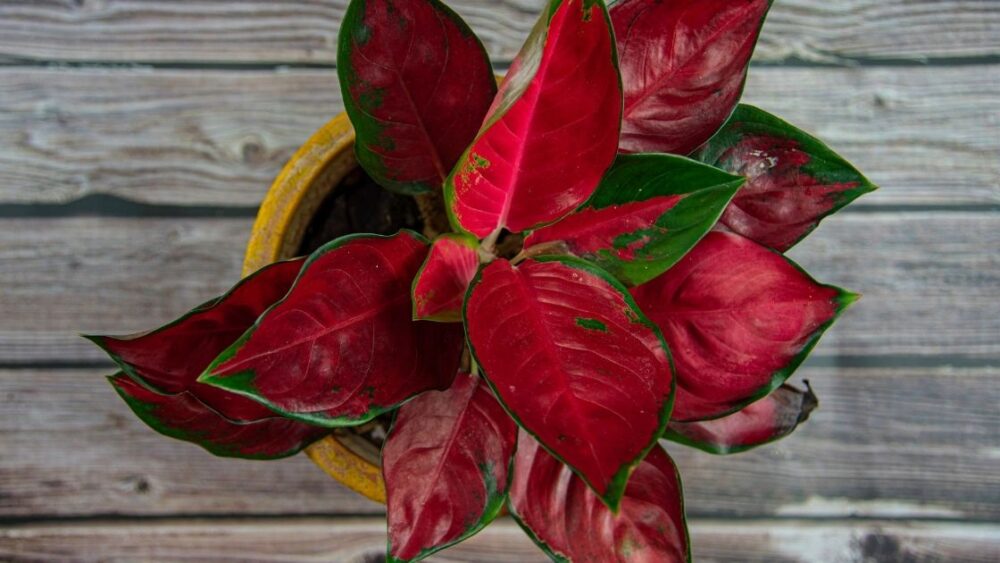
Aglaonema is an evergreen plant: it has some variations in the leaves with silver or yellow color. The plant maintains its green and beauty throughout the cultivating season. Aglaonema is a perennial plant: it lives more than a year and the cultivating season is more adorable to gardeners. Aglaonema plants are easy to know among others in a garden: they have wide leaves (evergreen with yellow/silver lines) and erect stems (that grow a few inches above the ground). Aglaonema plants are unisex: they bear both male and female flowers. The flowers are in a spadix; however, the female flowers are closer to the base, while the male flowers are closer to the tips. The separation is important for pollination and regulates how the reproduction takes place in Aglaonema.
Aglaonema is a dioecious plant: only cross-pollination occurs in the plant. Cross-pollination affects reproduction and allows gardeners to monitor the growth phase. Although the growth and development of Aglaonema are well observed, it is possible to have a dying Aglaonema plant. This article explains how you will know a dying Aglaonema plant and what you need to do.
Possible Causes and Solutions of an Aglaonema Plant Dying
In the following below, you will find common possible causes for what’s ailing your Chinese evergreen plant . While all plants react differently in their environment, sometimes they respond well with certain tweaks such as, temperature, watering schedule, and lighting. If all else fails, you can always propagate your aglaonema and start over with a stem cutting.
Browse our Affiliate Products
In addition, you may want to check out this article: Why do Newly Planted Plants and Flowers Wilt?
Low temperature (below 65 degrees Fahrenheit)
Aglaonema plant does not thrive in cold weather, and if the temperature falls below 65 degrees Fahrenheit, the plant turns yellow. The green parts of the leaves turn yellow when the Aglaonema plant is exposed to more than enough cold, and this is because the plant stops growing at this temperature. The plant stops metabolizing; reduced metabolism results in more yellow leaves. If yellow leaves replace the green (chlorophyll) parts of the leaves, Aglaonema will not undergo photosynthesis, and it is at a high risk of dying.
It would help if you considered the number of affected leaves and level of coldness; these factors help you safenAglaonema from cold injury. First, consider the number of affected leaves and remove them at the base of the stem – do not remove more than three leaves on a plant. If the affected leaves are more than three, remove the worse parts and skip the remaining. The reason is because of the chances of reviving the plant again through metabolism.
The second thing is to change the plant location and put it in a new place with a relatively high temperature. The temperature should not be less than 65 degrees Fahrenheit. The plant should be in this new location until new and positive changes are observable. Snip off the yellow parts as new green leaves grow – you need to take it one at a time; remember that you should not take more than three leaves on a plant.
Over-wetting (causes root rot)
Most plants do well with a moderate watering system. Aglaonema is at risk of root rot if the plant is over wetted. Many signs show over wetting, including stunted growth, yellow leaves, mushy stems, and deformed leaves. One of the identity markers of root rot is overall changes within the plant. For example, the leaf, stem, and roots display the sign of root rot in one way or the other. You can also do a manual check for root rot, called a weight check. Weight check compares the weight of an average and normal Aglaonema plant; if your plant container is heavy or shows standing water within the root area, the plant is at risk of root rot.
Water drainage and standing water prevention are possible ways of eliminating root rot. To eliminate root rot, place some copies of the newspaper on the floor and gently remove the Aglaonema plant from the pot. Remove as much as possible soil from the root (proceed with care), and place the plant on the newspaper. Leave the plant on the newspaper overnight. Before repotting, you should place some stones inside the container to prevent standing water. You will need to add some potting soil (improve the drainage system) since you have removed some soil from the root. Place the plant inside the pot.
For more information on self-watering pots, check out this article: Do self-watering pots cause root rot and other issues?
Sunlight exposure
All plants need the sun to survive; however, too much sunlight can cause a pale Aglaonema leaf. Once the color turns pale, it is a sign that your plant is dying.
It would be best if you considered reducing the amount of light exposure to save an Aglaonema from sunlight. First, consider the number of affected leaves and remove them at the base of the stem – do not remove more than three leaves on a plant. If the affected leaves are more than three on a plant, remove the worse parts and skip the remaining. The reason is because of the chances of reviving the plant again through metabolism.
The second thing is to change the plant location and put it in a new place with a relatively low temperature. The temperature should not be less than 65 degrees Fahrenheit. The plant should be in this new location until new and positive chances are observable. Snip off the yellow parts as new green leaves grow – you need to take it one at a time; remember that you should not take more than three leaves on a plant.
For more information on other type of house plants, check out these articles: House Plants
Aglaonema General Information and Care

- Common Names: Aglaonema commutatum
- Scientific name: Aglaonema, Chinese evergreen
- Growth cycle: Evergreen perennial
- Sun: Low to bright, indirect light
- Watering: soil dry before watering
- Adult size: 20-inch high
- Planting zones: 10b and 11
- Weather hardiness: not cold hardy
- Propagation: stem cutting
- Toxicity: Toxic to people; toxic to pets
- Dormancy: Winter
- Soil: Peat-based potting soil
- Bloom: late Winter, as well as Spring and Summer
- Fertilization: monthly during the spring and summer months
Conclusion
Aglaonema is a wonderful plant; it makes your garden or indoor space cool and elegant. However, the plant is toxic to humans and animals. Ensure you do not come in contact with the sap. Aglaonema is easy to maintain, provided you avoid some factors that may cause your plant to die. If you apply the tips above, you will love the output.












